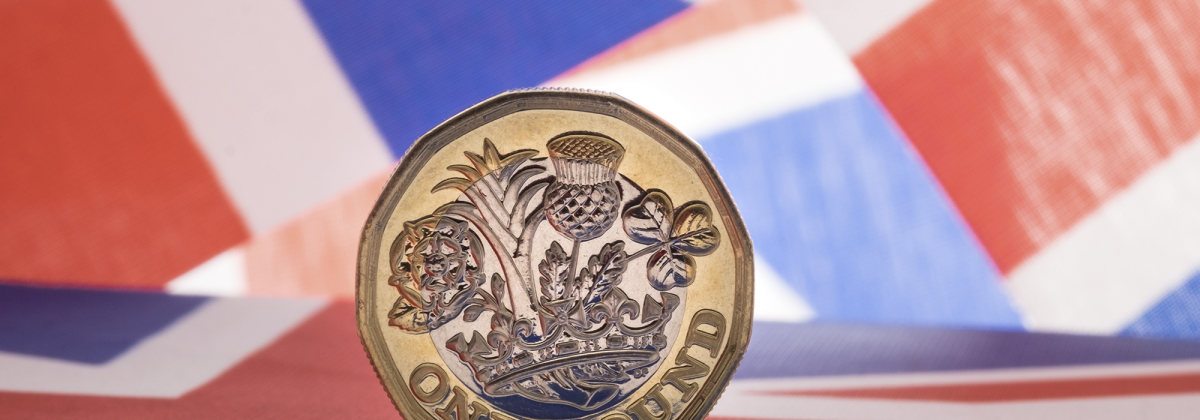After more than 3 years of political uncertainties and deadlocks, Brexit finally happened on January 31, 2020. Now we discuss, what is the future for the Pound after Brexit? A number of analysts predicted that the reaction of the Pound Sterling could be quite dull, since the markets had already priced in the event. However, the Great British Pound rallied against the US Dollar in the Brexit aftermath, trading over $1.3115 and at €1.1897 against the Euro. Along with a weakened dollar, the other reason for this surge was the Bank of England (BoE) stalling any further interest rate cuts just the previous day, on January 30, 2020.
But the Brexit dilemma is far from over. Traders have already moved on to see what lies ahead for the UK and its long journey to striking independent trade deals with the EU and the other countries. For now, the UK stays in the single market and customs union until December 31, 2020. Based on how the deals are struck and their economic repercussions, the Pound Sterling would continue to see turbulence against the US Dollar and Euro.
What Lies Ahead?
All eyes are on March 3, 2020, when the UK will start its formal negotiations with the EU over the terms of the trade deal. Everyone wants to know the future for the Pound. Some of the main items on the agenda are access to fishing waters and the EU’s demand for a level playing field. Currently, the EU doesn’t have any zero-tariff, zero-quota trade agreement with any country. It wants the UK to give an assurance that it will not steal an unfair competitive advantage.
The negotiations might not fail, but if they do, the UK could end up with a delayed hard Brexit. In that case, the Pound Sterling might drop below 7% to trade at $1.24 against the USD.
So, what are the key points of these negotiations? In other words, what will likely challenge the Pound’s performance in the months to come?
Factors that Could Affect the Pound in the future
There are many factors that could affect the future of the Pound. From mobile phone networks to passport rules, everything will be up for intense negotiations in the 11 months ahead. Brexit has led to a new sense of solidarity among the rest of the EU nations, so it won’t be surprising if they assume a hardened stance towards Britain. After all, the UK was the second biggest economy in the region and also a big contributor towards the EU budget. The UK government hopes to achieve a trade deal before 2020, and also strike individual deals with the US, Japan and Australia.
1. Trade Negotiations
One of the biggest factors that will affect the Pound’s future are trade negotiations with the EU. The UK government is faced with two choices: whether to comply with existing EU laws or achieve regulatory autonomy. The latter will make trade harder with the EU. Before that, the government will have to start creating policies in matters where the EU played a significant role before, like agriculture, environment and immigration. The UK will have to form legislation on these areas, according to the high standards that EU membership prescribes.
2. The March 2020 UK Budget
Analysts believe that the market hasn’t yet priced in the rebound of economic data of European countries and the UK, against a slowing US economy. Monetary policies in most developed nations have reached a threshold. In such circumstances, a sizeable loosening of UK fiscal policy in its March budget could provide support to the Pound Sterling.
3. Manufacturing Output and Service Industry
Brexit has already hurt Britain’s manufacturing output and investment sentiment. A bad trade deal will not be good for the just-in-time supply chains, which require frictionless movement across borders to succeed. This is especially true for car manufacturers. Due to the benefits of the EU’s single market, carmakers have supply chains all over the EU and UK, where the UK is the destination for about 10% of the vehicles assembled in the region. Not only will billions of Euros worth of tariffs hurt consumer affordability, but it could also hurt jobs. The tariff and quota free trade doesn’t do much for the service sectors, where the UK has a surplus on trade with the EU.
The UK scored substantial improvements in its current account and basic balance in Q3 2019, despite the looming risks of a hard Brexit. The large portfolio flows into UK equities and fixed income could be positive for the economy. It is expected that a recovery in the cyclical global slowdown will probably benefit beta currencies like the Pound Sterling.
4. The Northern Ireland Problem
The Northern Ireland situation is a challenging one. The country will remain a part of the UK customs territory, but also follow specific trade regulations of the EU. Businesses that are dealing with cross-border trade in the country are concerned about how this will pan out. Northern Ireland complicated Britain’s Brexit plans from the beginning, but Prime Minister Boris Johnson was able to carve out a deal that was workable, by allowing this region to largely stay in the EU single market.
Now, the UK could choose to remain closely aligned with EU customs regulations, but that defeats the whole purpose of Brexit. Moreover, now it won’t have any say on how these laws are made and implemented.
Northern Ireland trades mostly with the EU and the Republic of Ireland. About two-thirds of the exports from the EU and 50% of the imports to the EU are traded with the Republic of Ireland. If the Northern Ireland assembly decides against departing from the EU standards and regulations, it could spell trouble for Britain. Unrest in the region could be bad for the future of the Pound Sterling.
Last but not the least, the coronavirus epidemic could take a serious toll on the global economy. If it continues to spread at a rapid rate, currencies could fluctuate. The UK had registered 3 cases, as of February 7, 2020. Further escalation could lead to panic and widespread fear among citizens, which could hit consumer spending.
Overall, if the negotiations stay on track and the UK is able to secure a workable deal with the EU during 2020, the Pound could attain a level of $1.45 against the US Dollar, which is pretty close to the pre-referendum levels.
Reference Links
Start Trading in 3 easy steps
1
Complete the Application Form
It takes just minutes for us to verify your identity and set up your account.
2
Download MT4 Platform
Download MT5 and trade via your desktop, mobile or tablet. No minimum deposit required.
3
Start Trading
Trade more than 60 products (Forex, CFDs & Commodities)





